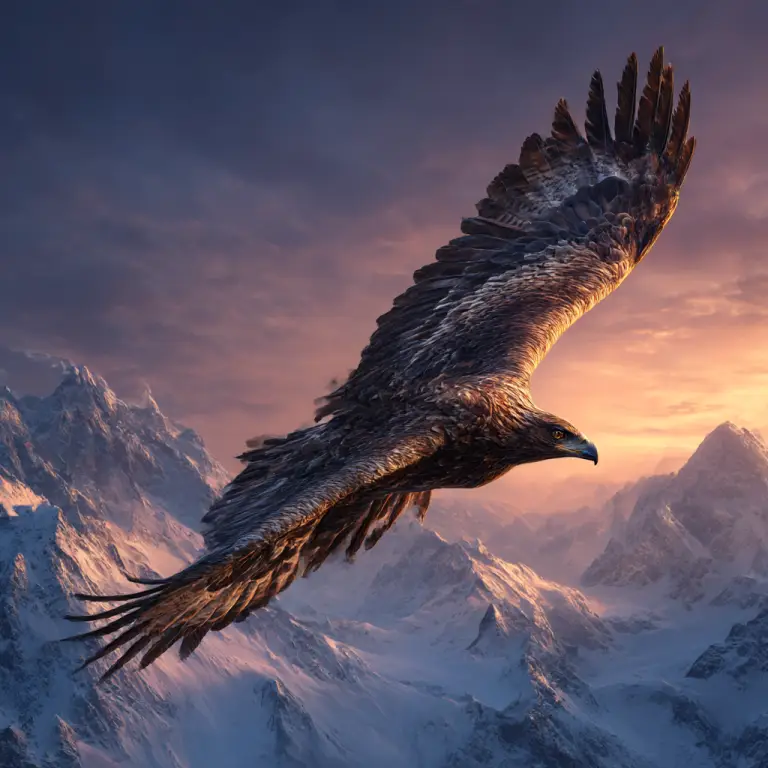Hraesvelg – The Eagle of Norse Mythology
Hraesvelg, often referred to as the “Corpse Swallower,” is a formidable and enigmatic figure in Norse mythology. This immense eagle resides at the edge of the world in the realm of Jotunheim and is a significant mythological symbol of both natural forces and cosmic order. His name, which translates roughly to “he who swallows the dead,” reflects his association with death and the wind. According to the Prose Edda, Hraesvelg perches at the end of the heavens, and when he beats his wings, the wind is generated across the earth.
The eagle’s enormous wings are said to create the northern winds, which sweep over Midgard, the world of humans. In this way, Hraesvelg is not only a mythological creature but also a personification of natural phenomena, linking the divine with the earthly realm. His presence at the boundary of the world suggests a connection between life, death, and the forces that govern the cosmos.
Hraesvelg is often depicted in myths as silent and distant, a solitary figure whose immense power is beyond the comprehension of gods and humans alike. He embodies the untamable aspects of nature, representing strength, freedom, and the inevitability of death. While he does not interact directly with the gods in most accounts, his influence is felt throughout the world as the wind shapes weather, travel, and the environment.
The eagle’s symbolic significance extends to themes of transformation and transition. In Norse cosmology, the movement of the wind is crucial for change and the progression of events. Hraesvelg’s wings, therefore, act as a divine mechanism of motion and flux, affecting both the natural and metaphysical realms. Scholars often associate him with the liminal spaces of the cosmos, the thresholds between life and death, the known and unknown.
Hraesvelg remains a potent symbol in contemporary interpretations of Norse mythology. Artists and writers frequently portray him as a massive, dark eagle silhouetted against the sky, a reminder of the ancient connection between the gods, the elements, and the cycle of life and death. His enduring presence in myth underscores the Norse understanding of the power of nature, the inevitability of mortality, and the subtle forces that shape the world.
